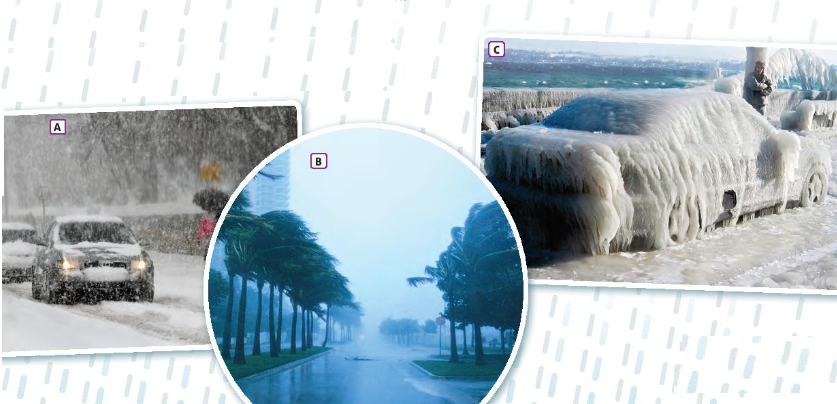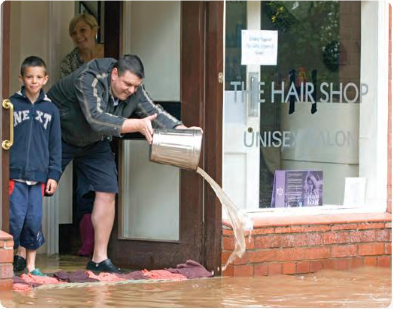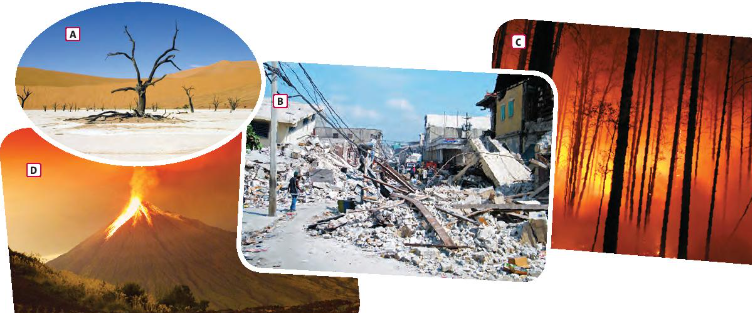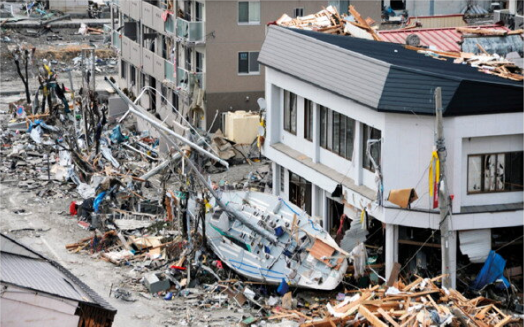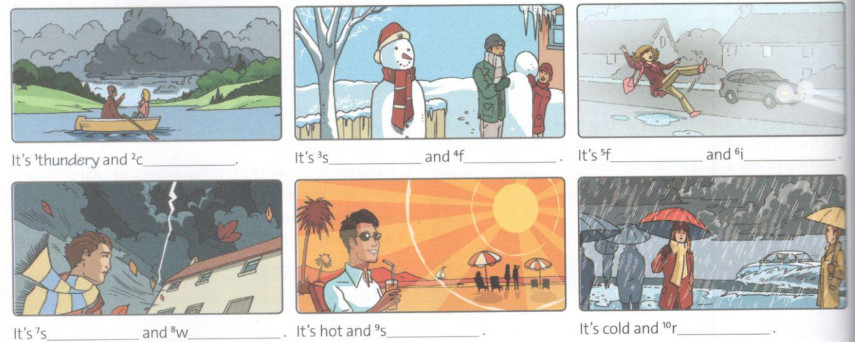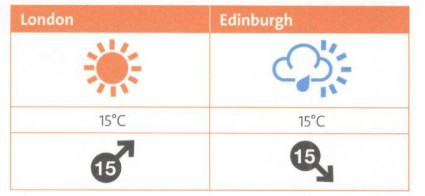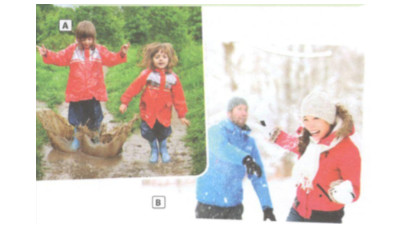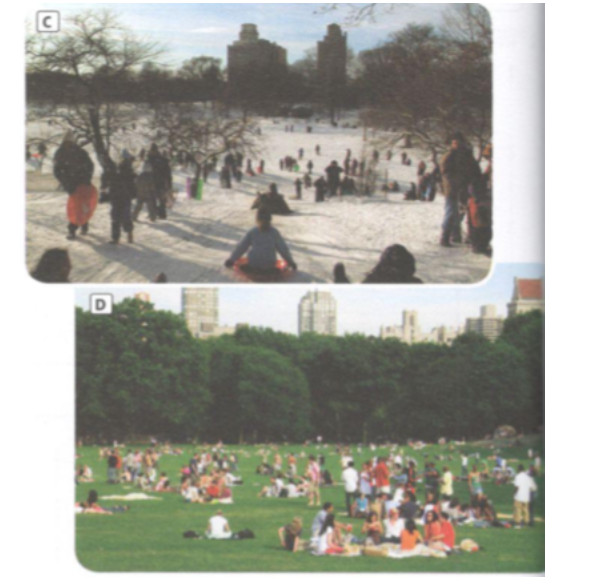Giải SGK, SBT Unit 4. Our planet Friends Global
Giải SGK, SBT Unit 4. Our planet Friends Global
2. Complete the table with the highlighted words from the quiz in exercise 1. What do you notice about the way the adjectives are formed?
(Hoàn thành bảng bên dưới với các từ được làm nổi bật trong câu đố ở bài tập 1. Hãy chú ý xem các tính từ được hình thành như thế nào?)
|
Weather |
|||
|
Noun |
Adjective |
Verb |
Related words and phrases |
|
(1) |
cloudy |
|
Rain clouds (2) |
|
fog |
(3) |
|
|
|
frost |
frosty |
|
frostbite |
|
(4) |
|
hail |
hail storm |
|
Ice |
icy |
|
|
|
(5) |
|
|
flash of lighting |
|
mist |
misty |
|
|
|
(6) |
(7) |
rain |
(8) |
|
shower |
showery |
|
rain shower |
|
snow |
snowy |
snow |
(9) |
|
(10) |
stormy |
|
thunderstorm |
|
(11) |
sunny |
(the sun) shines |
(12) |
|
(13) |
thundery |
to thunder |
clap/ crash of thunder |
|
(14) |
(15) |
(the wind) blows |
|
5. Read the Recycle! box. Then listen again and complete these sentences from the weather reports.
(Đọc hộp Ôn tập! Sau đó nghe lại và hoàn thành các câu trong bản báo cáo thời tiết.)
|
RECYCLE a few, a little, not much / many, a lot of Remember: we use a few, not many or a lot of with plural (countable) nouns. (Nhớ rằng: chúng ta dùng a few, not many hoặc a lot of với danh từ đếm được số nhiều.) a few thunderstorm (một vài cơn bão) We use a little, not much or a lot of with uncountable nouns. (Ta dùng a little, not much hoặc a lot of với danh từ không đếm được.) a little snow (một ít tuyết) |
Report 1
1. lt's -10°C and there's _____ everywhere.
2. We're expecting _____ this afternoon.
Report 2
3. There is _____ on the ground.
4. There isn't _____ but the wind is blowing the snow into my face.
Report 3
5. There were _____ and it was windy too.
6. Now there's _____ and the wind is extremely strong.
2. Complete the table with comparative adjectives from part 1 of the text.
(Hoàn thành bảng với dạng so sánh hơn của tính từ từ phần 1 của bài khóa.)
|
Short adjective |
Comparative |
Rule |
|
small |
(1) |
+ -er |
|
large |
(2) |
+ -r |
|
early |
(3) |
-y --> -ier |
|
big |
(4) |
double consonant + -er |
|
Long adjective |
Comparative |
Rule |
|
powerful |
(5) |
more + adjective |
|
Irregular adjective |
Comparative |
|
|
far |
(6) |
(no rules) |
|
good |
better |
|
|
bad |
worse |
2. Read the Listening Strategy. Then listen to three dialogues and answer questions 1-3 below for each one. Give reasons for your answers.
(Đọc Chiến thuật Nghe. Sau đó nghe ba đoạn hội thoại và trả lời các câu hỏi 1 – 3 bên dưới cho mỗi đoạn hội thoại, Đưa ra giải thích cho em.)
1. Who is speaking? (Ai đang nói?)
2. When are they speaking? (Họ đang nói khi nào?)
3. Where are they? (Họ là những ai?)
|
Listening Strategy (Chiến thuật nghe) Listen carefully for clues to help you identify the context of the listening: (Hãy lắng nghe cẩn thận các gợi ý để có thể nhận ra nội dung bài nghe) - who is speaking. (ai đang nói.) - where and when they are speaking. (họ đang nói ở đâu và khi nào.) - what the situation is. (tính huống là gì.) |
3. Complete the text with the words below.
(Hoàn thành văn bản với các từ dưới đây.)
|
blow |
claps |
flashes |
raindrops |
|
sunshine |
thunderstorm |
storm clouds |
There was a terrible (1)______________________yesterday evening. We saw big, dark grey (2)______________________in the distance. Then a strong wind started to (3)______________________and it began to rain heavily – huge (4)______________________fell from the sky. We got incredibly wet! There were (5)______________________of lightning and loud (6)______________________of thunder. It was quite scary. But then the storm passed and there was bright (7)_______________________
1. Complete the sentences with the correct form of the verbs below.
(Hoàn thành câu với dạng đúng của các động từ dưới đây.)
| approach | head | land | reach | spin | take off |
1. A snow storm was __________________ so we went inside.
2. The plane __________________ from London at 9 a.m. yesterday and __________________ in Paris an hour later.
3. It was very late when we __________________ Oxford.
4. The plane was __________________ towards Australia when it disappeared.
5. The helicopter began to __________________ out of control.
CÁC BÀI TẬP KHÁC



